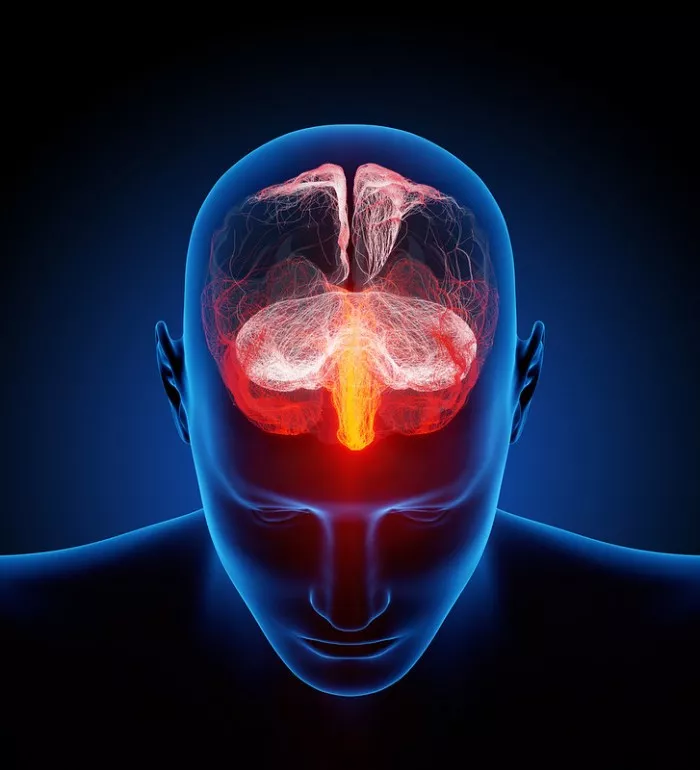In many ways, the eye functions like a camera, and the retina is like photographic film (or CCD in a digital camera). However, without the brain, you can actually see nothing. It is reported that the brain receives visual signals from the eyes through the optic nerve.

Data map
The main cortical area where the brain receives, integrates and processes visual information from the retina is called the visual cortex. It is located in the occipital lobe of the primary cerebral cortex and the last part of the brain. The visual cortex is divided into five different regions (V1 to V5) according to its function and structure, of which V1 is the primary visual cortex.
Now, a team of neuroscientists has found that the size of our primary visual cortex and the number of brain tissues dedicated to processing visual information in certain parts of visual space can predict our vision. The related research report, published in nature communication today, reveals a new connection between brain structure and behavior.
"We found that we can predict a person's vision based on the unique structure of his primary visual cortex," explained Marc Himmelberg, the lead author of the study and a postdoctoral researcher in the center for neuroscience and Department of psychology at New York University, "By showing that individual differences in human visual brain structure are related to changes in visual function, we can better understand the basis of differences in how people perceive and interact with their visual environment."
Like fingerprints, the bulges and grooves on the surface of each person's brain are unique. However, the significance of these differences is not fully understood, especially when it comes to their impact on behavior, such as the difference in our visual ability.
In a study published in nature communications, Himmelberg and his co authors, Jonathan winawer and Marisa Carrasco, professors of the center for neuroscience and Department of psychology at New York University, tried to clarify the relationship between these brain features and how we observe them.
The primary visual cortex (V1) is arranged into an image map projected from the eye. But like many kinds of maps, it is distorted, and some parts of the image are magnified compared with others.
Winawer explains, "think of the subway map of New York City. It makes Staten Island look smaller than Manhattan. The map maintains a certain degree of accuracy, but it enlarges areas that may have a broader interest. Similarly, V1 enlarges the center of the image we see -- where our eyes are fixed -- relative to the surrounding areas."
It is understood that this is because V1 has more organizations dedicated to the center of our vision. Similarly, V1 also enlarges the left and right sides of the fixed position of our eyes, relative to the upper or lower position, which is also caused by the difference in the arrangement of cortical tissue.
Using functional magnetic resonance imaging (fMRI), scientists mapped the size of the primary visual cortex (V1) of more than 20 people. The researchers also measured the number of V1 tissues that these people specialized in processing visual information from different locations in their field of vision - fixed on the left, right, above and below.
The participants also performed a task to assess their visual quality at the same location in the visual field as the V1 measurement. Participants identified the orientation of patterns displayed on the computer screen, which were used to measure "contrast sensitivity" or the ability to distinguish images.
The results show that the difference of V1 surface area can predict the measurement of contrast sensitivity. First, people with large V1 area have better overall contrast sensitivity than those with small V1 area (the largest surface area is 1776 mm2, and the smallest is 832 mm2). Second, people with more cortical tissue in V1 to process visual information in a specific area of their visual field have higher contrast sensitivity in that area than those with less cortical tissue in the same area. Third, among all participants, there was a higher contrast sensitivity at a specific location (such as the left) than at another location (such as the top) equidistant from the fixed point, which corresponded to areas with more or less cortical tissue, respectively.
Carrasco concluded: "in conclusion, the more V1 surface areas specifically used to encode a specific location, the better the visual effect of that location. Our findings show that differences in visual perception are closely related to differences in the structure of the primary visual cortex of the brain."